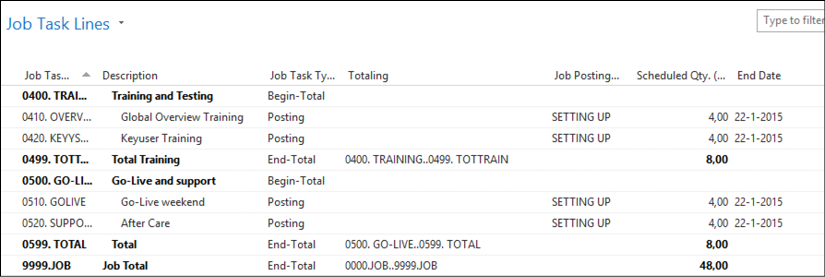In this chapter, we have used some changes to the Job functionality in order to make it work for CRONUS International Ltd. to sell Microsoft Dynamics NAV.
For some companies, it is very important to know the total number of hours required for a job and the number of hours used rather than the exact amounts.
For this, we have created new flow fields in the Job Task table:

The flow field definition is quite special.
Sum("Job Planning Line"."Quantity (Base)"
WHERE (Job No. = FIELD(Job No.),
Job Task No. = FIELD(Job Task No.),
Job Task No. = FIELD(FILTER(Totaling)),
Contract Line = CONST(Yes),
Planning Date = FIELD(Planning Date Filter)))

The Totaling field is for the lines of type End-Total. The ValueIsFilter property ensures that the field will be interpreted as a filter instead of a value.
The result is visible in the Job Task page (1002).

Result...



